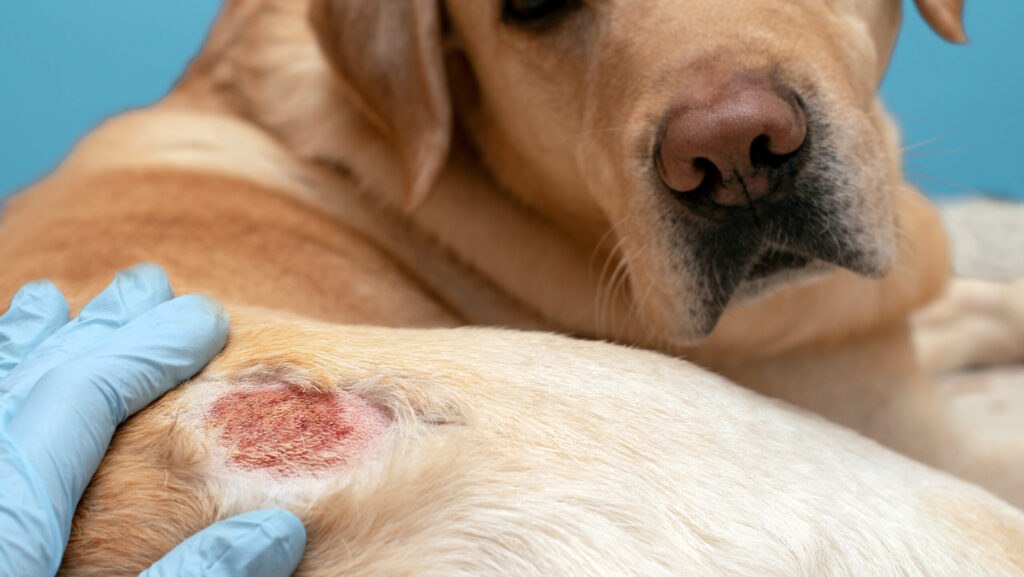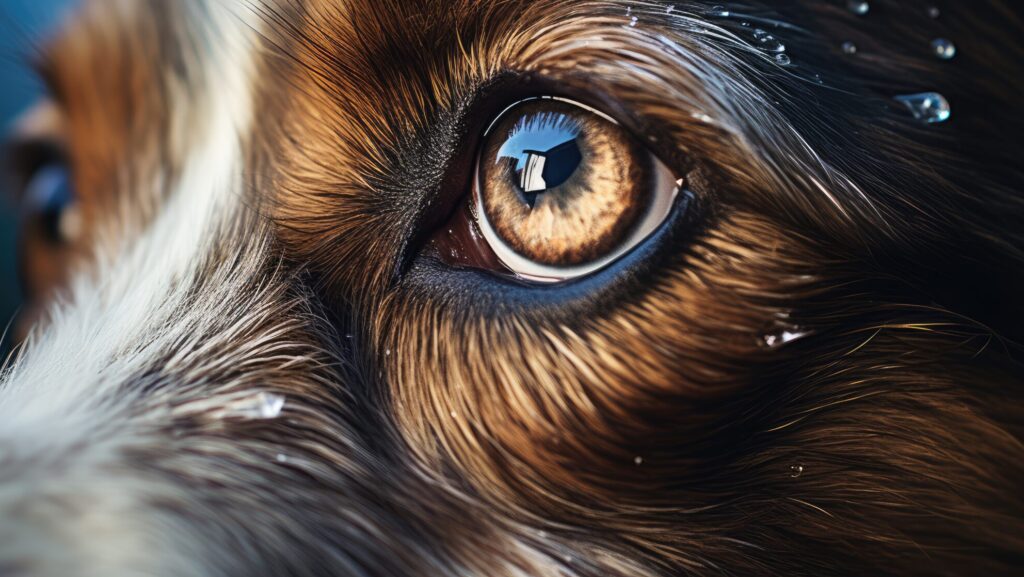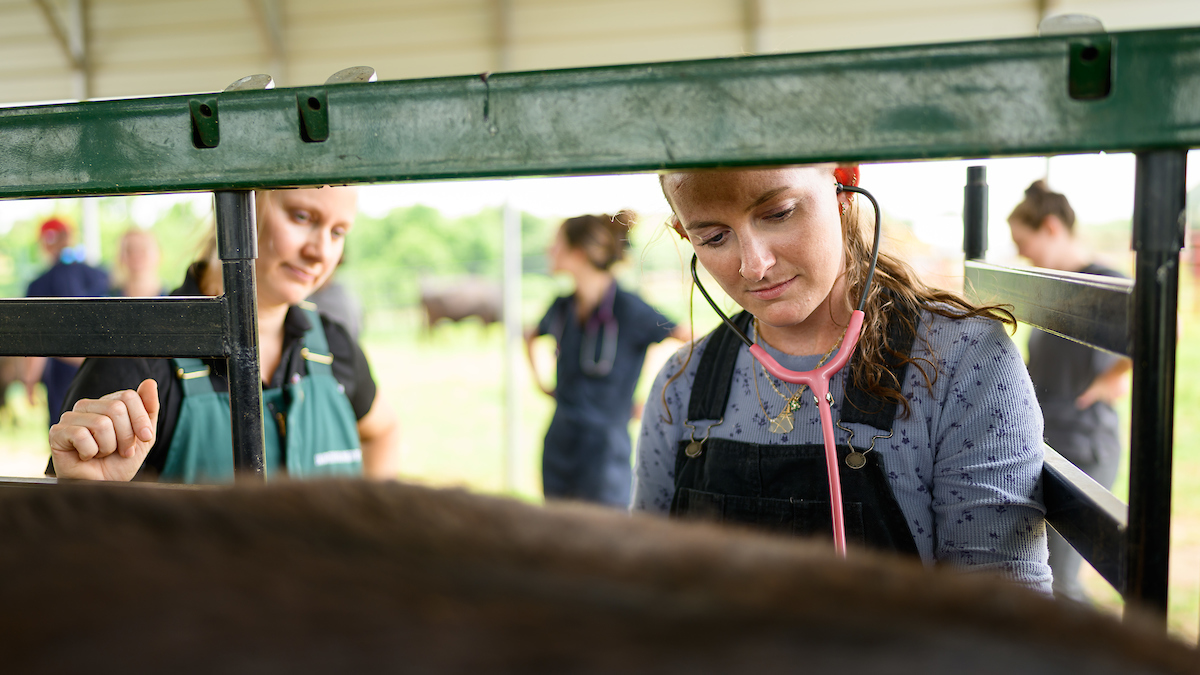Research Roundup NC State Veterinary Medicine, October 2023
Not only do veterinarians care for pets, livestock, exotic species and more, but they also play a pivotal role in protecting public health. Our researchers are global leaders in studying the intersection of human, animal and environmental health, and continue to advance the One Health approach to medicine through their innovative studies!

Understanding the Intersection of Human, Animal and Environmental Health Surrounding Harmful Blue-Green Alga
Rebecca A. Bloch, Grace Faulkner, Elizabeth D. Hilborn, Tina Wismer, Nicole Martin, Sarah Rhea
Harmful cyanobacteria, or blue-green algae, exposures can cause illness or death in both humans and animals and are a serious problem in both the US and world. Its persistence is due partly to rising global temperatures, higher nutrient contamination and carbon dioxide levels in aquatic environments and a rise in freshwater use to support the increasing population’s water needs. There are surveillance efforts, mostly on the local and state levels, to prevent exposures, but veterinarians serve an important public health role by recognizing illness signs from blue-green algae exposure in animals. An animal showing signs of this illness could mean that there is a bloom development nearby, posing a risk to other animals and humans. Therefore, a team of researchers, including several members of our Department of Population Health and Pathobiology, conducted a study that analyzed the ASPCA’s Animal Poison Control Center’s harmful blue-green algae call data, evaluated the data as a reflection of public health awareness of harmful algal blooms and considered how suitable this data is as a public health information source to help indicate and monitor possible blooms of harmful blue-green algae. The research from this study emphasizes the intersection between the health of humans, animals and ecosystems and the key role veterinarians play in the balance and well-being of all three.
The study was published in Toxins and can be found here.

Advancing the Study of Genetic Factors, Environmental Factors and Allergens in Canine Atopic Dermatitis
Patrick Hensel, Manolis Saridomichelakis, Melissa Eisenschenk, Chie Tamamoto-Mochizuki, Cherie Pucheu-Haston, Domenico Santoro,
Canine atopic dermatitis is a common inflammatory, itchy and irritating skin disease with a complex genotype that varies among breeds and even within the same breeds living in different geographic locations. It is also a hereditary disease. The genetic background of the dog, in combination with environmental factors, determines the risk of developing the disease. Researchers, including Chie Tamamoto-Mochizuki from our Department of Clinical Sciences, set out to review the current evidence on the role of genetic and environmental factors, as well as the role of allergens, in the pathogenesis of canine atopic dermatitis based on studies completed over the last several years. The reviews determined that there are still a lot of mysteries surrounding this condition. However, environmental factors appear to play a major role, especially during puppyhood, which has an important impact on the developing immune system. Other factors, such as growing up in a rural environment, contact with other animals and a nonprocessed, meat-based diet, may reduce the risk for subsequent development of the condition. The researchers determined that further studies are necessary to shed more light on the different roles that genetics, environmental factors and major allergens all play in the pathogenesis of canine atopic dermatitis.
The review was published in Veterinary Dermatology and can be found here.
Evaluating the Survival Capabilities of Bartonella henselae in Different Environmental Sources
Janice C. Bush, Ricardo G. Maggi, Edward B. Breitschwerdt
Bartonella henselae is an important emerging vector-borne pathogen that can be transmitted from animals to humans and has been found worldwide among cats, other mammals and certain fleas. However, because of the increased number of diseases associated with Bartonella infection, it is important for scientists to also focus on the environmental risks and sources of infection, not just on the vector transmission of this organism. A team of researchers, including Ed Breitschwerdt, Ricardo Maggi and Janice Bush from our Department of Clinical Sciences, investigated the ability of B. henselae to survive in fluid solutions that mimic possible environmental sources of infective materials, like blood, serum, cow’s milk and physiologic saline over certain periods of time. The results of the study show that B. henselae does have environmental survival capabilities not previously recognized. The researchers emphasize using a One Health approach to comparatively address the comparative aspects of human and animal infections, as well as impacts of various vectors and the environment, to achieve a better understanding of B. henselae transmission in nature.
The study was published in Pathogens and can be found here.

Evaluating UV Radiation Transmission in the Retina of Select Species
Nicole E. Himebaugh, James B. Robertson, Keith Weninger, Brian C. Gilger, Bjorn Ekesten, Annie Oh
Mammals’ eyes are equipped with protective mechanisms to prevent ultraviolet radiation from entering parts of the eye and damaging cellular structures, particularly the retina. Even so, research has found that the ability to detect UV light is helpful for some species, aiding with foraging, mate selection, predator detection and other tasks for survival. A recent study, including ophthalmologists Annie Oh and Brian Gilger, aimed to gather more information on the transmission of UV radiation in the eyes of different species using spectrophotometry, a quantitative measurement of the intensity of light of various wavelengths. The study found that cats and dogs allowed the most amount of UV radiation transmission, pigs and humans allowed the least amount of UV radiation transmission, and rabbits and horses fell in the middle. This study serves as the basis for future UV vision research, as building upon our knowledge concerning vision capacity in companion and working animals can help us further understand how they visually process their environments.
The study was published in Experimental Eye Research and can be found here.
Exploring Pet Owners’ Attitudes, Perceptions and Behaviors Regarding Antimicrobial use Within Veterinary Care
E. Frey, A. Kedrowicz, M.W. Hedgpeth
Being selective about when and how to use antimicrobials has become an important discussion topic in both human and animal medicine due to the increase in resistant strains. Because pet owners are their animals’ closest companions and caretakers, it’s important that veterinarians and owners have strong communication surrounding the subject of antimicrobial treatments. A recent study led by NC State College of Veterinary Medicine’s Erin Frey, April Kedrowicz and Mari-Wells Hedgpeth aimed to explore pet owners’ attitudes, perceptions and concerns around antimicrobial use within the scope of veterinary care. The results of their study, which included five focus groups of both dog and cat owners, found that conversations about antimicrobial use can be reframed by veterinarians to include alternatives to antimicrobials as part of the treatment plan, empowering clients to play a more active role in their animals’ care. The study remarks that clear communication with client-friendly terminology can help veterinarians preserve the effectiveness and availability of antimicrobials while maintaining a trusting relationship and shared decision-making between clients and veterinarians.
The study, published in the Journal of Small Animal Practice, can be found here.
Research Connection: The Intersection of Basic Science and Clinical Research with Dr. Joshua Stern
The NC State College of Veterinary Medicine recently welcomed back Dr. Joshua Stern as the associate dean and director of Research and Graduate Studies. Dr. Stern spent several years at the College of Veterinary Medicine completing a cardiology residency in 2012, and he is now principal investigator of the Stern Translational Cardiac Genetics and Pharmacogenomics Laboratory. Dr. Stern’s lab focuses on veterinary cardiology, specifically inherited heart disease, and how to use genetic data to guide treatment and prognosis, as well as the development of large animal models of human heart disease such as hypertrophic cardiomyopathy. We sat down with Dr. Stern to talk about his lab’s research, the importance of applying basic science research to complex clinical problems and his vision for the advancement of research at NC State College of Veterinary Medicine.
- Categories:


